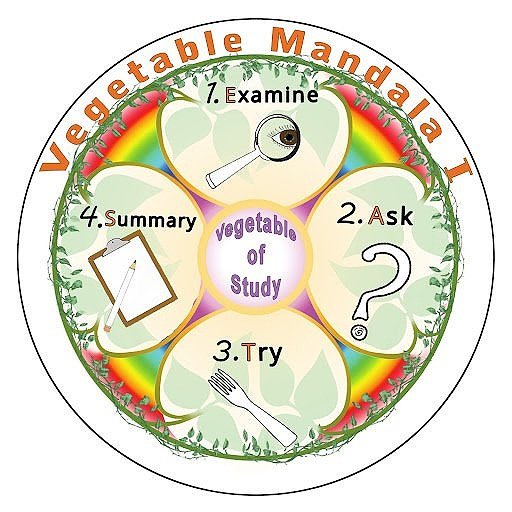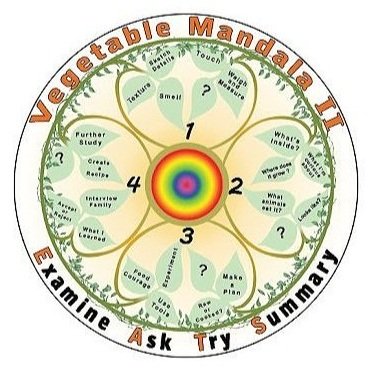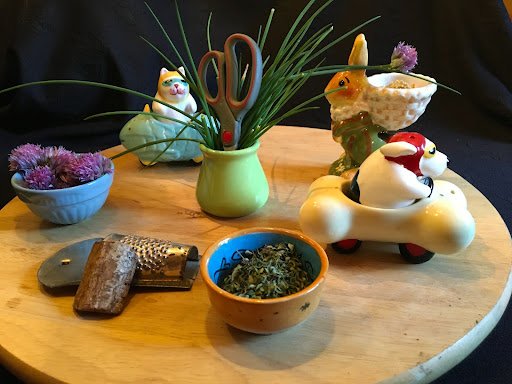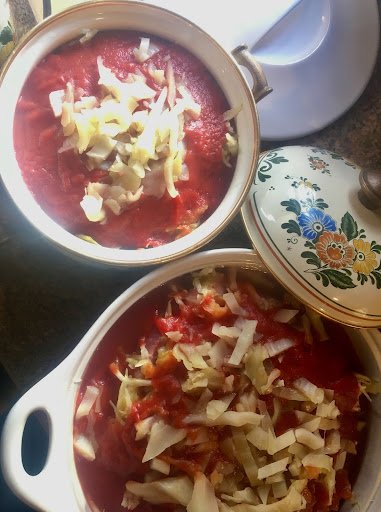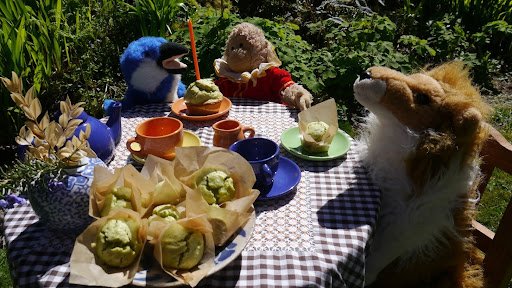Cooking with Children Builds Communication, Connection, and Creativity
Why Children Should Cook, Part Three
by Heide Horeth, author of 4 Ways to Yummy Children’s Vegetable Cookbook, a guide to help the entire family cook, eat, and love real food together.
Cooking together allows families to communicate, connect, and create while sharing nourishment. Working together also helps to land dinner on the table more quickly, and in today's fast-paced world, getting some extra help is a good thing. Working and cooking together and being attentive and focused introduces mindfulness. We all can slow down and be grateful for the bounty of wholesome slow food on our table.
Food Connects Us to The People We Love
We are wired to love not just the taste of food, but the beauty as well. The food we make can transport us through time and conjure up old memories. Perhaps you already make a special dish passed down from your family. Those recipes are priceless and tell your family story. I make cabbage rolls every Christmas Eve to honor the flavors and tradition of the old country (Romania/Germany/Austria) where my parents are from.
It’s never too late to start a ritual that will become your family’s tradition. It can be as simple as having a regular tea time, making popcorn on movie nights, or preparing and sharing particular foods for celebrations. Around Thanksgiving, I make springerle cookies, which is the custom in my husband's family. It is not always the time and effort that make these foods noteworthy, it's the connection food has with your heritage and the people you love.
Communicating with Younger Children
If you can read words or pictures, you can cook. What better way to show children the power of words. For pre-readers, pictures are writing. Parents can use simple drawings to communicate tasks with little ones. Try using a visual grocery list to include your child in shopping. Let them be responsible for picking a new fruit or vegetable. When children are part of the process, they are more likely to respond favorably. Success is not necessarily liking the food, it’s about learning and being more adventuresome. Through repeated exposure, many of us grow to love foods we would never have considered delicious as children. To help explore the plant kingdom, you can use my mandala activities (Illustrations and details below). Everyone will see and learn something new. That’s the first step to making friends with the beautiful foods of the plant kingdom.
-
This circle game of veggies is divided into four steps which spell EATS. (You can find more information in Heide’s cookbook.)
EXAMINE your vegetable like a detective. Look closely at the vegetable, list and discuss what you see or may already know.
ASK and encourage questions like: What would you like to know? Does it grow above or below ground? What do plants need to grow?
TRY your vegetable. Decide how you will eat a vegetable that may be new to you. Will you try it cooked or raw? How does it feel on your tongue?
SUMMARIZE what you have learned. Draw a picture of your vegetable. Rate the recipe. Did it get a smiley face?
-
This more in-depth activity is geared toward older children who would like to explore and expand their knowledge of vegetables. (You can find more information in Heide’s cookbook.)
EXAMINE - Use some math on your vegetable and see what it weighs and how large it measures. Dissect the vegetable and examine it inside. Is it the same color or has seeds? Take notes.
ASK questions like: How many of this vegetable would it take to weigh as much as you? Does the vegetable show tell tale signs of how it grew? What animals eat this food? Etc.
TRY the vegetable with a scientific approach. What parts are edible? Does it taste the same from top to bottom and inside out? How will you try the vegetable?
SUMMARIZE - Write down your observations and draw conclusions. Make a hypothesis, or start a vegetable journal with sketches and detailed notes.
Creative Ideas to Make Dinner Time Fun and Inclusive:
Older children can help to plan healthy menus.
A rainbow pizza party or a sandwich swap luncheon are fun ideas to try.
Try setting up a popcorn bar that explores different spice toppings.
Get more familiar with spices, herbs, and seasonings. It’s not only tasty, but full of health benefits.
Keep several spices on the table and see how folks might use them. You can even put out a mystery spice and see what your family will do. There is no right or wrong answer.
Adding some tools like a small grater, a spice mill, or scissors to snip herbs is another way to improve fine motor skills and make it interesting. Children love kitchen tools!
Reassess family roles in food prep, table setting, and clean up. Ask children to take ownership of a part of dinner prep and be sure to acknowledge their efforts. Even a toddler can shake a salad dressing or carry napkins to the table. Kitchen time with family members can be made enjoyable, and in time, will become automatic.
Try using an assembly line of family members to bring the dishes or dinner to the table.
During the meal, share your stories and allow children to open up and talk (this helps slow down eating too).
Play upbeat music during cleanup and get some exercise.
Try a theme night and decorate the table with simple paper cutouts, pinecones, flowers, leaves from the outdoors, etc. Rubber dinosaurs or stuffed bears can make interesting characters for a dinner party.
Don’t let angst stop you from inviting your children to help you in the kitchen. One step at a time will get you there. As always, I wish you a happy and tasty cooking adventure.
Previous articles in this series:
Heide Horeth is a cookbook author and former columnist for Grandparents Day Magazine. She lives on Whidbey Island, WA with her husband, Jerry, and their veggie-loving dog, Dalai. Originally from upstate New York, Heide recalls simple, seasonal food made with love. Her cherished childhood memories include working and laughing side by side with her mother in the kitchen. These early experiences taught Heide that placing children in the kitchen is a powerful and natural experience that helps them make better eating choices throughout their lives. As a mom and preschool health assistant for ten years, Heide developed recipe charts and creative methods to help children take a lead role in the kitchen. This ultimately led her to write 4 Ways to Yummy Children’s Vegetable Cookbook, a guide to help the entire family cook, eat, and love real food together.



